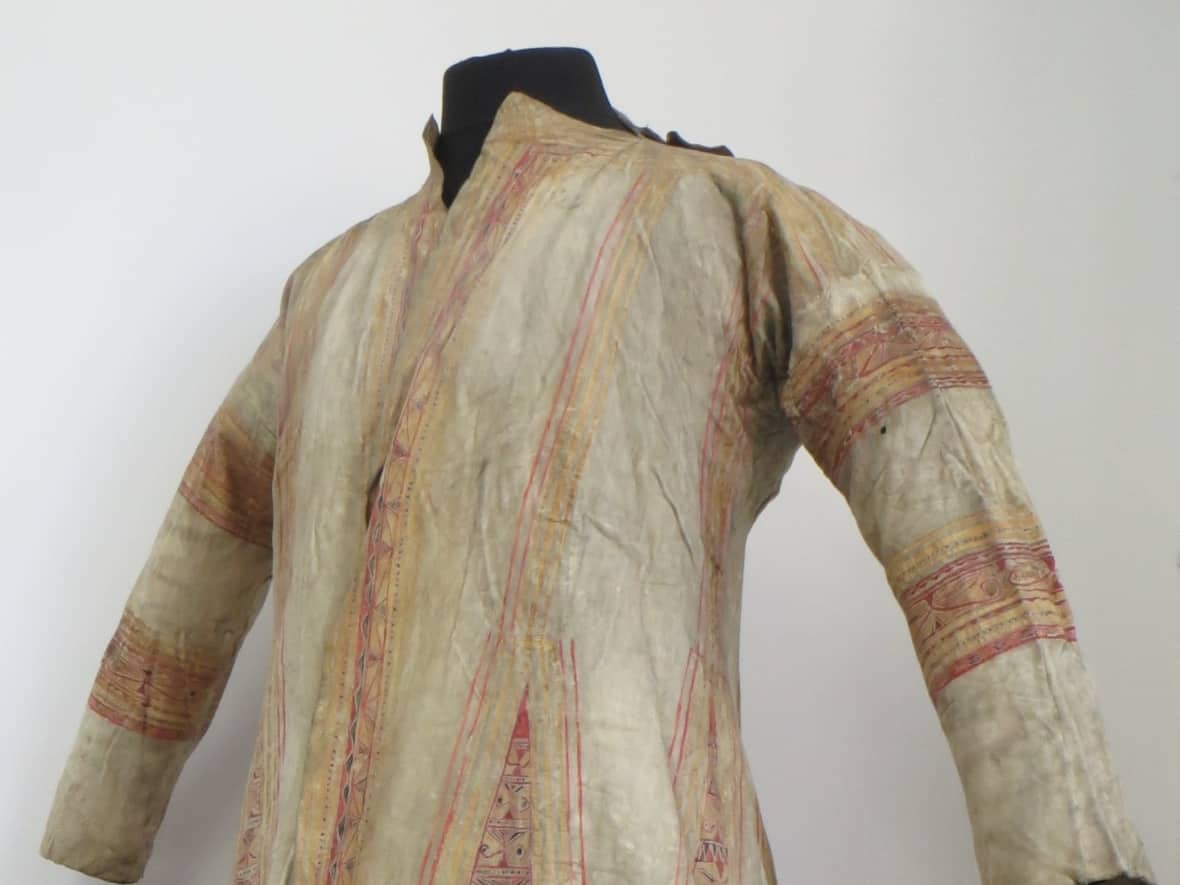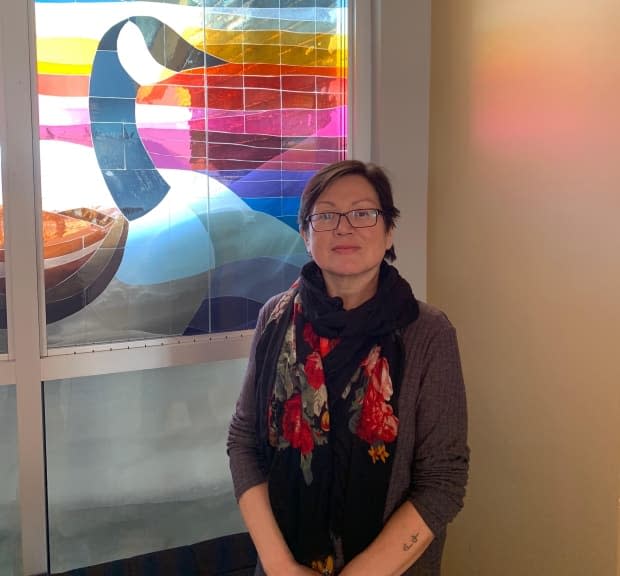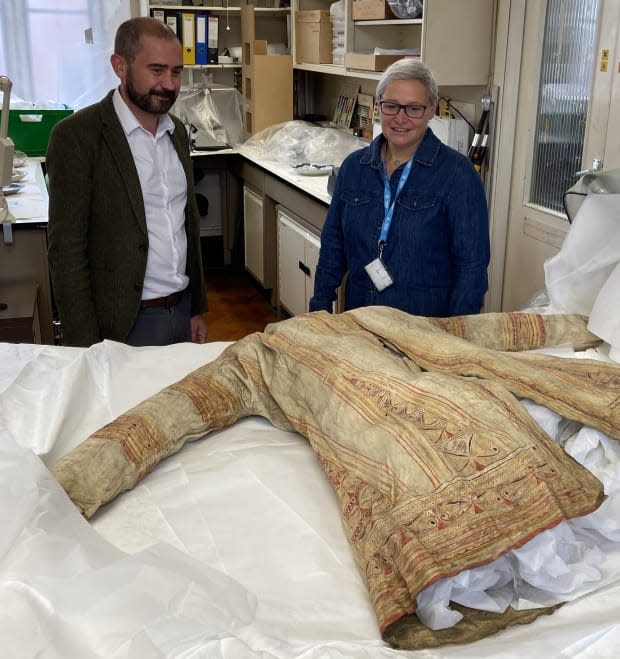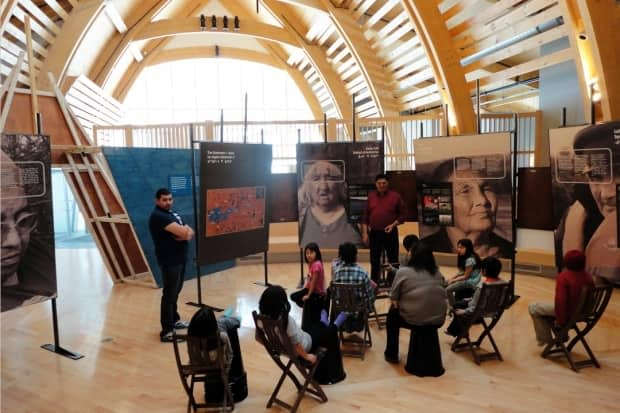Caribou coat in English museum heading home to northern Quebec

A caribou coat from northern Quebec is on its way back home from a museum in Bristol, England, where it has been since the 1830s or 40s.
Decorated caribou coats were used by Cree, Innu, Naskapi and Montagnais hunters and in ceremonies from 1700 to the 1930s. The coats were believed to have spiritual powers that could help hunters have a good harvest and were often traded with or taken by outsiders.
"It's an honour to receive it here," said Minnie Coonishish, the executive director of the Aanischaaukamikw Cree Cultural Institute (ACCI), in Oujé-Bougoumou, Que. where the coat will be part of its collection.
"It's like bringing part of our identity back home," she said.
It's like bringing part of our identity back home. - Minnie Coonishish, executive director of ACCI
The coat is believed to be from the Naskapi nation and belonged to a hunter, according to officials at the Bristol Museum and Art Gallery. The coat came from a private collector, although not much else is known.

Coonishish said it is sentimental to all Indigenous groups with a connection to the caribou coat tradition.
"That's where we came from ... It's important to bring it home," she said, adding that Naskapi and Innu nations all agreed that the coat belongs at the Cree-run ACCI.
The ornate caribou coats were often painted using natural dyes in elaborate designs and motifs unique to individual nations.
Early settler research suggested the spiritual powers in the coats waned at the end of a hunting season and these coats lost their significance to the Indigenous communities and hunters who wore them, but now it is believed that was not the case, according to Lisa Graves, world cultures and archaeology curator at the Bristol Museum and Art Gallery.

Current research, some of which has been done at ACCI, suggest the spiritual properties and significance of these caribou coats remain active, said Graves.
"We are working on trying to find out what continuing spiritual power or beliefs these coats still hold," said Graves, adding that a lot of the specific information about this particular coat was never properly documented and has been lost. She is very excited that the research can now continue at ACCI.
Efforts to transfer the coat began in 2014 with a request for a temporary loan of two of three caribou coats that the Bristol museum had in its collection, as well as a James Bay beaded hood.
Eventually, a formal request was made for a permanent transfer of one of the caribou coats, according to Graves.
She said the transfer of artifacts back to Indigenous groups is something the Bristol museum was very happy to be involved in.
"The power of these objects, that have been away from their homes for so long, [and what it] means to communities ... To be part of that process and to continue that healing ... I was very proud to be able to do that," said Graves.
Vital information and teaching tool

Coonishish said there is so much vital information still to learn from the coat, and another caribou coat that is already part of the ACCI collection.
"We can learn about the use of the jackets ... how they were used ... through ceremonies and hunting," said Coonishish.
She said she is very excited about the coat's potential as a teaching tool.
"It's really important to have items like this in our territory, so that our people can learn about our traditions and history," said Coonishish.
The caribou coat is expected to arrive at ACCI in early November and will be part of a new exhibition planned for the spring of 2022.
The hope is that it will be part of a 10th anniversary celebration of the ACCI and that Innu and Naskapi nations will take part, said Coonishish.


